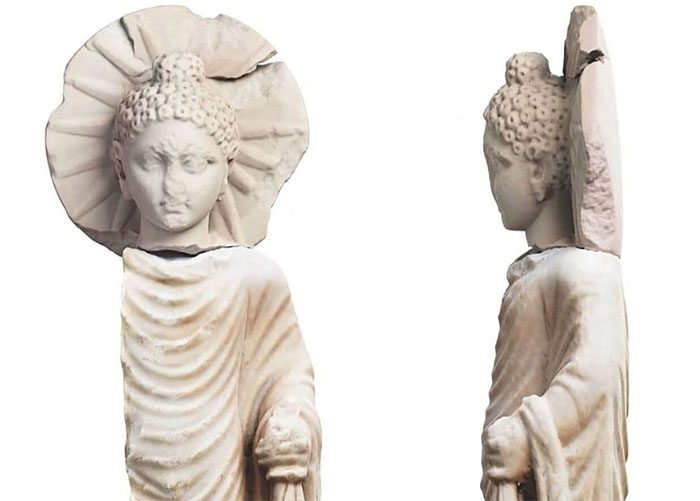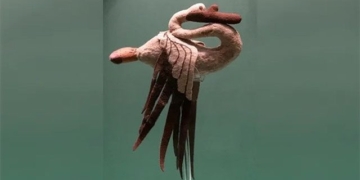A Buddha statue discovered at the port of Berenice in Egypt on the Red Sea has shed light on the trade relationship between this country and India during the Roman Empire.
American and Polish archaeologists uncovered the statue, “dated to the Roman Empire while excavating the ancient temple in Berenice,” according to a statement by the Egyptian Supreme Council of Antiquities on April 27.

Buddha statue discovered at the port of Berenice, Egypt. (Photo: Egyptian Ministry of Tourism and Antiquities).
The Secretary-General of the Egyptian Supreme Council of Antiquities, Mostafa Waziry, stated that this discovery indicates “important signs of the presence of Egypt-India trade relations during the Roman period.”
“Egypt is centrally located on the trade route connecting the Roman Empire with many regions of the ancient world, including India,” he said.
The statue stands 71 cm tall and is missing part of its right side, depicting the Buddha with a halo around his head and a lotus flower beside him.
Waziri noted that Berenice was one of the largest ports in Egypt during Roman times and often served as a destination for Indian ships laden with spices, gemstones, textiles, and ivory.
Egypt has announced many significant archaeological discoveries in recent years as part of efforts to revive tourism after years of political instability and the Covid-19 pandemic, according to AFP.
However, critics argue that a series of excavations prioritizes findings that attract media attention over academic research. The government plans to attract 30 million tourists annually by 2028, up from 13 million before the pandemic.


















































